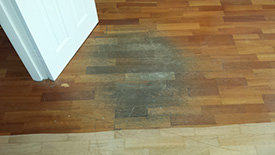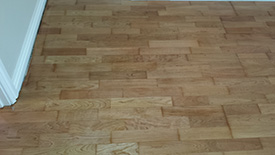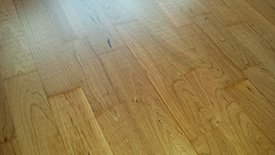
Fixing damaged wood floors can be quite daunting. This level to which you feel this may depend on the degree of damage on your wood floor. It is important to remember that it is best practice to fully sand the entire floor rather than fixing small areas.
Why is this?
Fixing or sanding a small area of your wood floor will highlight the deterioration of the entire floor. There are some exceptions to this rule. However, generally as a rule of thumb you should restore the whole floor if at all possible.

Wood floors tend to deteriorate over time. This deterioration comes from daily use, sunlight and other factors. Some of these factors are less visible than others. It is sometimes more difficult to see the discolouration of the wood floor until you start to sand back the layers of surface damage.
This is an incredibly rewarding part of the process. As you complete the floor sanding process, the years or dirt, damage and grime start to be erased. We were asked to sand and restore this wooden floor in Preston. This is evidence of how some areas can become more damaged than others.
Why might this happen?

This may happy because of walkways or areas that people track through regularly. If furniture is placed in certain locations, you will naturally use the clearer areas to walk around the furniture. This may leave some areas more prone to damage than others. There may also be areas that are damaged by staining or spillages. Again, it is important to restore the whole floor rather than tackle the individual problem.
Doorways are more likely to be damaged rather than other areas. A way to solve this problem is by placing entrance mats to the doorways in your home. However, be assured that even the most careful individuals will have issues with their wood floors. They need to be resealed in order to ensure their defence against further wear.
If you have questions or would like to find out more about fixing damaged wood floors, please call today on 0800 852 7177.

Leave A Comment